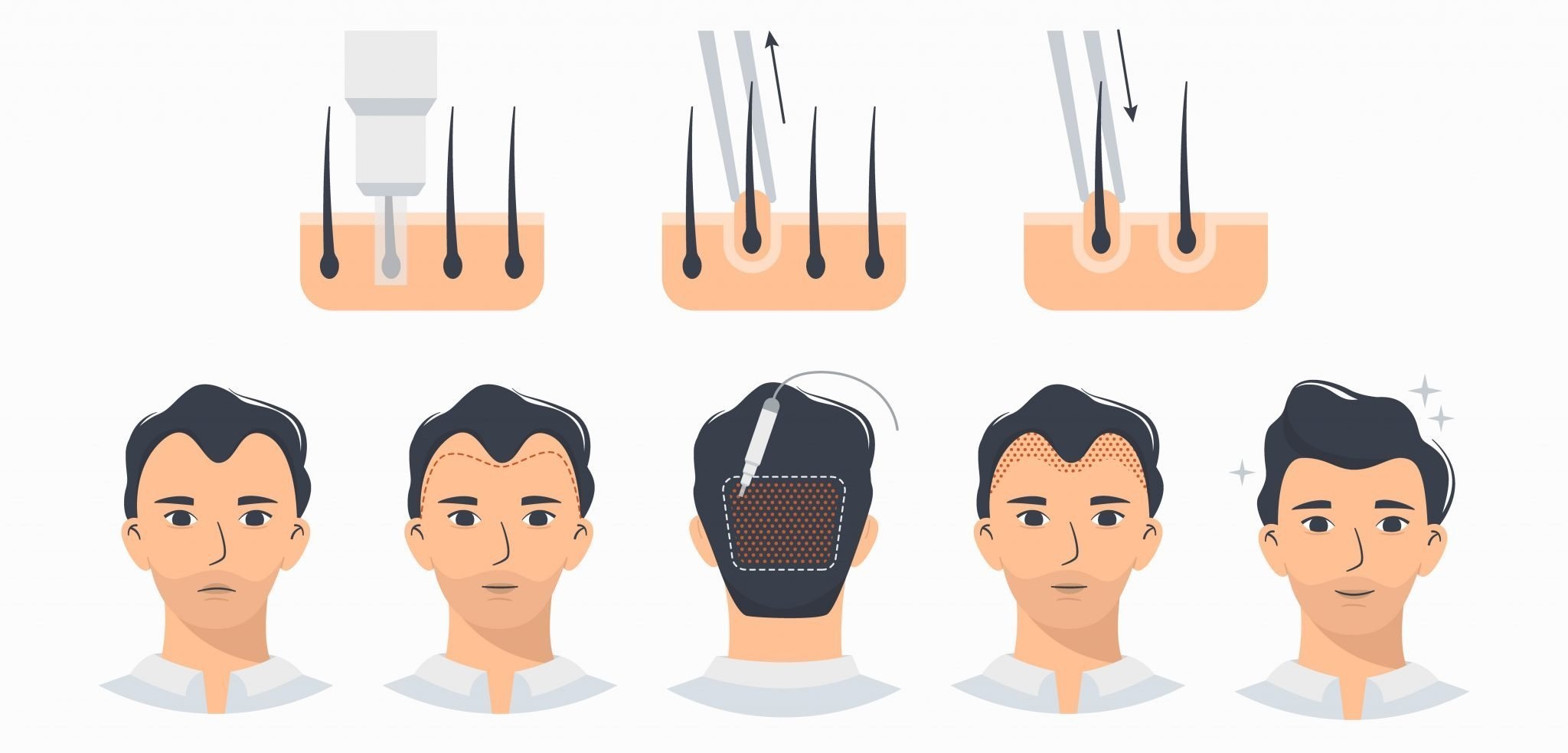FUE Technique Advantages
First of all, let's talk about the advantages of FUE hair transplantation stated by experts;
- Minimal Scars: The FUE technique removes hair follicles one by one, causing minimal scars in the donor area, which provides a more natural appearance after the operation.
- Faster Recovery: The recovery process of FUE operation is faster compared to traditional hair transplantation techniques. Most patients can return to their normal lives within a few days.
- Seamless Operation: FUE hair transplantation does not require stitches, which reduces post-operative pain and discomfort.
- Natural Appearance: Hair follicles taken with the FUE technique are placed at natural angles, which makes the results look natural.
- Protection of the Donor Area: FUE protects the hair follicles taken from the donor area with minimal damage, so the hair in the donor area continues to grow healthier.
- Multiple Grafts: The FUE technique allows more hair grafts to be removed in a single operation, which can create denser hairlines.
- Less Pain and Discomfort: FUE surgery is generally associated with less pain and discomfort.
- Flexibility: FUE offers the flexibility to harvest hair follicles from different parts of the body.

FUE Hair Transplantation is the most advanced hair transplantation method along with DHI. After the technique first appeared in 1988, it has gradually replaced FUT. The main advantage of FUE over FUT was the absence of scarring after transplantation, and therefore it quickly gained popularity.
Which Method Was Used Before FUE?
Before FUE, the main method of hair transplantation was follicular unit transplantation (FUT or FUSS). In the FUT method, surgeons have to make an incision around the head. The incision is made around the occipital (back of the head) part of the scalp from one ear to the other. After removing this cut strip of skin, the surgeon stitches the ends of the skin together. This method of hair transplantation is now quite old and most surgeons have abandoned this method.

What is Different in FUE Hair Transplantation?
The main difference between the two is how they approach grafting. The doctor cuts a strip and uses it to create a graft. However, in FUE and DHI surgeries, doctors do not make any incisions.
FUE and DHI hair transplantation operators use an electrical device called micromotor. These devices contain a high torque motor and have a round tip called a punch. This punch opens small holes around the hair follicles that we will use as grafts.
Punch size varies depending on the patient's hair follicle type. Punch radius is generally between 6mm and 9mm. There are also larger punches, but they are not used frequently.
If the patient's hair is very curly, a larger punch may be required. Because curly hair roots generally tend to be curly like the structure of the hair. Using a small punch on this type of hair may cause damage to the hair follicle.
FUE Hair Transplantation Stages
During FUE hair transplantation, multiple personnel work simultaneously throughout the operation to speed up the process.
How can we determine where and in what quantity the grafts will be transplanted?
Once the hair follicles are separated, examined and cleaned, the doctor prepares to open the channel. Channels are small holes that doctors make with microblades.
However, trading for a long time may be uncomfortable. Therefore, after opening the channels, the teams take a short break to give the patient some time.
Anesthesia Procedure
During the operation, specialists will anesthetize you at least twice. You will receive the first anesthesia application just before the hair follicles are removed.




